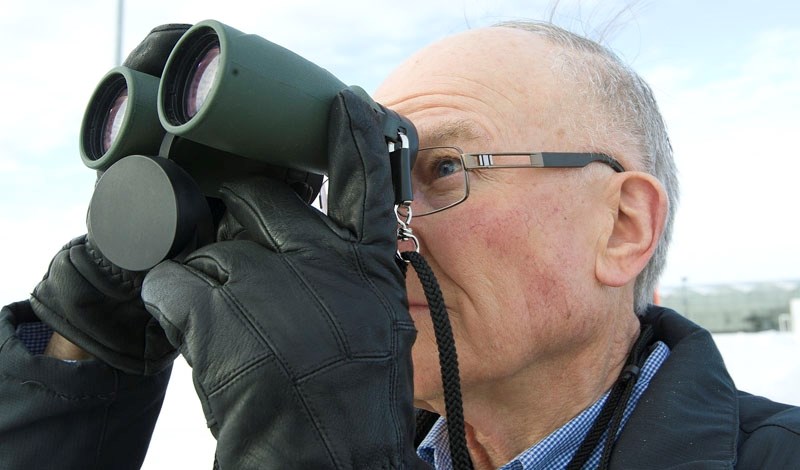A tiny bird that sounds like a sharpened saw made its triumphant return to St. Albert last month as part of the annual Christmas bird count.
Some 161 residents patrolled St. Albert last Dec. 29 as part of the 22nd annual St. Albert Christmas Bird Count, said count co-ordinator Alan Hingston – the third best turnout in its history.
Bush-beaters and feeder watchers spent all day patrolling a 24-kilometre wide zone centred on the St. Albert Airport, counting all the birds they could find as part of an international effort to track biodiversity.
“The weather was certainly good,” Hingston noted, as it was sunny all morning and hovered at about -5 C.
The actual count was pretty ordinary, he continued, with some 6,770 birds from 35 species identified, none of which were new to the count.
“It blends right in as a very average year,” he said.
It was a poor year for birds of prey, Hingston said, with just five snowy owls, three northern goshawks, two merlins and one great horned owl identified. (The city typically sees several more of each of these species during the count.)
But one winged predator was spotted for the first time in 10 years – the northern saw-whet owl. An exceptionally uncommon sight, this tiny fellow was last spotted during the 2002 count. Just five have been identified in the count’s history.
The northern saw-whet owl stands about eight to 10 inches tall, said local birder Peter Demulder, and is known for its yellow eyes and striped forehead. Those stripes make it distinct from the boreal owl, he added, which has a spotted forehead. (The boreal owl made its first appearance in count history back in 2008, count records show.)
It’s easiest to identify the saw-whet by listening for its call, Demulder said.
“It doesn’t hoot. It whistles.”
The best time to hear one is towards evening. Keep an ear out for a steady sound like that of a saw being sharpened with a file or whetstone – that sound is the source of the saw-whet’s name.
Another oddball was a white-throated sparrow seen camping out at a feeder. These birds are common during the summer, Hingston said, but seeing one here in the winter is unusual.
Most of these birds should be in Texas by now, Demulder said.
“It’s a nice clean-looking sparrow,” he said, and has a white throat and a yellow spot just behind its beak. During the spring, it can be recognized for its rather patriotic song: “Oh Canada, Canada, Canada.”
Counters also spotted four mallards despite the complete lack of open water in the area.
There are actually quite a lot of mallards that hang out on the North Saskatchewan during the winter, Hingston explained. Many of them fly over to local grain elevators for food. These particular birds were spotted in flight. Up to 900 mallards have been spotted during previous counts.
Ravens continued their wintertime invasion of St. Albert, count results suggest, with some 237 identified – about 79 times more than there were back in 1991. Ditto for house finches: a record 164 birds were spotted, compared to zero prior to 2006.
“Their numbers are just going through the roof,” Hingston said.
Count results will now be submitted to the National Audubon Society.




